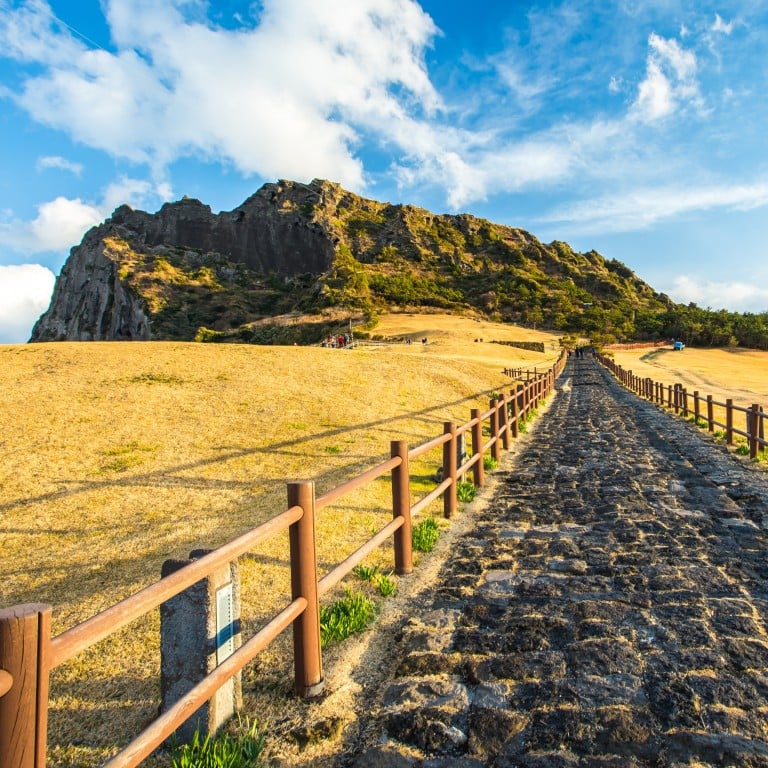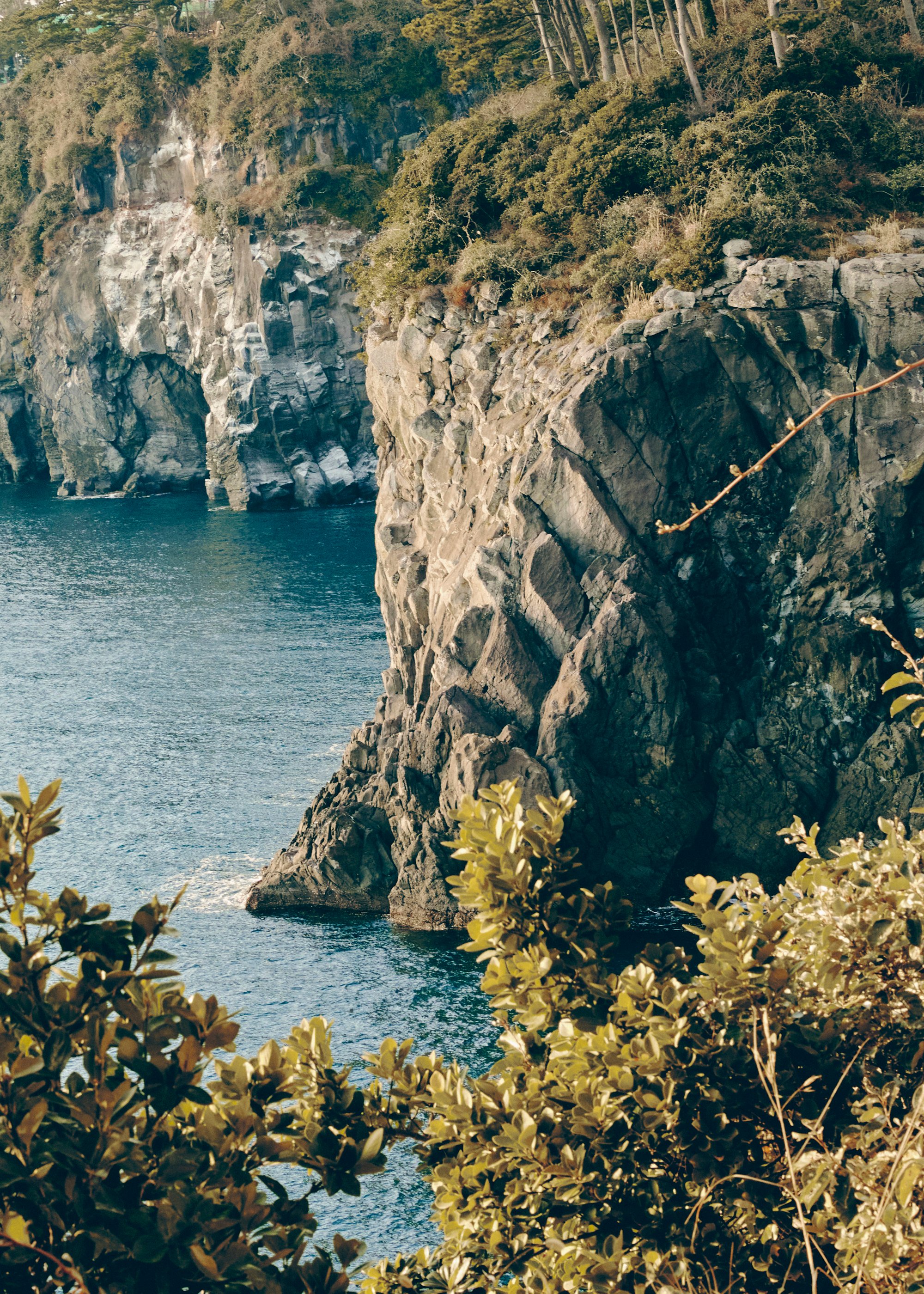Jeju Island, beyond the K-drama: the ‘Hawaii of South Korea’ made famous by Netflix’s Squid Game is home to natural splendour, cultural heritage and traditional haenyeo female divers

The epicentre of the island is Hallasan, the country’s tallest mountain and a dormant volcano, while most visitors stay in urban areas on the coast like Jeju City in the north, which is popular thanks to its multistorey condos, restaurants and hotels, and smaller Seogwipo in the south.

I’m hoping to explore the natural wonders that have made Jeju a Unesco World Heritage site and have opted for the latter as a quieter base. Along the way there I encounter lots of tourist traps including theme parks and dozens of museums dedicated to random interests like teddy bears and seashells. There’s no shortage of barbecue restaurants that advertise Jeju Heukdwaeji too, a local black pig known for its succulent belly meat. It all feels quite touristy until I enter the grounds of the newly opened JW Marriott Jeju Resort & Spa.
2 luxury hotels to check out in Tokyo in 2023 – Four Seasons and Bulgari
The hotel is perched atop a cliff and feels incredibly secluded while allowing for expansive views of the ocean. It’s made up of a series of sleek, minimalist buildings that house public and private areas, connected by open-air corridors and Zen-like infinity pools. Everything is made from local volcanic stone and slate, so the buildings blend into the landscape.

The 197 rooms and suites take up only a fraction of the site, although they are luxurious both in size (starting at 43 square metres) and design. Bangkok-based American designer Bill Bensley created the interiors, which boast a vibrant yellow palette inspired by the island’s canola flower fields, accented with grey and white. All the rooms are light and airy thanks to top-to-bottom glass doors which open onto balconies with views of the ocean or secluded gardens. Some rooms even have a private hot tub.
Which Macau restaurants gained – or held – Michelin stars in 2023?
The hotel offers all the luxury amenities you would expect like a spa, indoor and outdoor pools (a traditional Korean spa complete with hot springs will open early next year), a kids’ club and six dining options. The Island Kitchen is popular not just for its over-the-top brunch but also its melt-in-your-mouth croissants. The more upmarket Flying Hog features local produce – chef de cuisine Jayden Kim forages for local greens daily and espouses a zero-waste cooking method – cooked on a traditional wood-fired grill.

The resort is home to 50 art pieces dotted throughout the hotel and grounds. Most are from the hotel owner’s personal collection, and include a custom piece by Ugo Rondinone, sculptures by Lynn Chadwick and other recognisable works by Jeff Koons, Damien Hirst, Alexander Calder, Claude and François-Xavier Lalanne and Frank Gehry. A museum dedicated to the work of Korean artist Park Seo-bo is also slated to open on the grounds.
Avid walkers will enjoy in the fact that the resort’s garden directly connects to the Olle Trail, a hiking route of 27 “courses” that together circumnavigate the entire island, traversing 400 kilometres of windswept coastline, cliffs, volcanic rock formations and tangerine groves (the Jeju mandarin, known for its sweet yet tart flavour, is everywhere). The trail is so popular that it has become a rite of passage for locals and visitors alike to complete.

The landscape here is otherworldly: hilly, with subtropical forest and feeling even prehistoric in places. Fringing the coast are smaller islands like Beomseom and the lonely 20-metre high Oedolgae rock, as well as natural swimming pools like Hwanguji Seonnyeotang. The deep blue waters remind me of the Mediterranean, although I’m told the more swimmable white sandy beaches are those at Hamdeok and Gimnyeong in the east.
Why Da Nang, Vietnam is the hottest new wellness destination of 2023
Nature lovers will find plenty to do in Jeju. The autumn colours of Hallasan National Park, a Unesco Biosphere Reserve, are a sight to behold and you could easily spend several days exploring the hiking trails and other natural wonders including the crater lake.

Other popular activities include watching the sunrise from extinct volcano Seongsan Ilchulbong in the far east or exploring the Manjanggul Lava Tube, the only accessible part of a vast network of volcanic features that span the island.
There are also thundering waterfalls, forests with towering cedar trees and green tea farms that produce leaves that are milder than their Japanese counterparts. If you want to take your exploration further afield, you can jump on a ferry to neighbouring islands like Udo, famous for its fragrant peanuts (be sure to try the ice cream).

What gives Jeju its unique character, though, beyond the natural and geological sites are its cultural traditions, the most famous being its haenyeo female divers or “mermaids” as they are affectionately known. This matriarchal community, which was designated as a Unesco Intangible Cultural Heritage in 2016, is said to date back to the late 1800s.
4 luxury eco-resorts in Langkawi, Malaysia to book this summer
There are over 8,000 divers in communities dotted among the island’s coastal villages, with the eldest in her 80s. The season starts in May and lasts until October, with each haenyeo working five to six hours daily, using minimal equipment save for a wetsuit and a single buoy. More experienced members can dive to depths of up to 10 metres and hold their breath for up to two minutes allowing them to collect an abundance of seafood like abalone, sea urchin, sea snails, sea cucumber and octopus.
As part of the hotel’s activity programmes, we were able to meet with Yesaeng Hyung, vice-chairman of the female divers community in Beophwan village, who started diving at the age of 20 to support her family. Although she no longer needs the income, she has made it her mission to shine the spotlight on this once secretive community to ensure that their legacy continues.

“As the women in our community begin to age, the number of divers dwindled, so we decided to open up. We realised the importance of sharing the precious haenyeo culture, which is deeply intertwined with our way of life, with the next generation,” says Hyung, who is in her late fifties.
Today, the haenyeo’s traditional way of life not only coexists with tourism but is thriving thanks to it. Until seven years ago, Hyung says she was among the youngest in the community, a title now claimed by a 19-year-old. Haenyeo-dedicated museums, community centres, restaurants and training schools have opened to welcome new recruits – including a handful of males and even a foreigner – so their story will continue.
My fleeting visit to Jeju left me wishing to return. Unlike many tourist destinations, the island has managed to strike the delicate balance between progress and development while preserving its ecological treasures and cultural heritage. This, along with its stark beauty, means it seems set to continue to attract visitors from all walks of life.

- Mentioned in countless Korean drama series, Jeju Island is a geological wonderland home to cliffs, lava tubes and Hallasan, the country’s tallest mountain
- Designer Bill Bensley created the interiors at the new JW Marriott Jeju Resort & Spa, a destination stay showcasing artworks from Jeff Koons, Damien Hirst, Alexander Calder and Frank Gehry